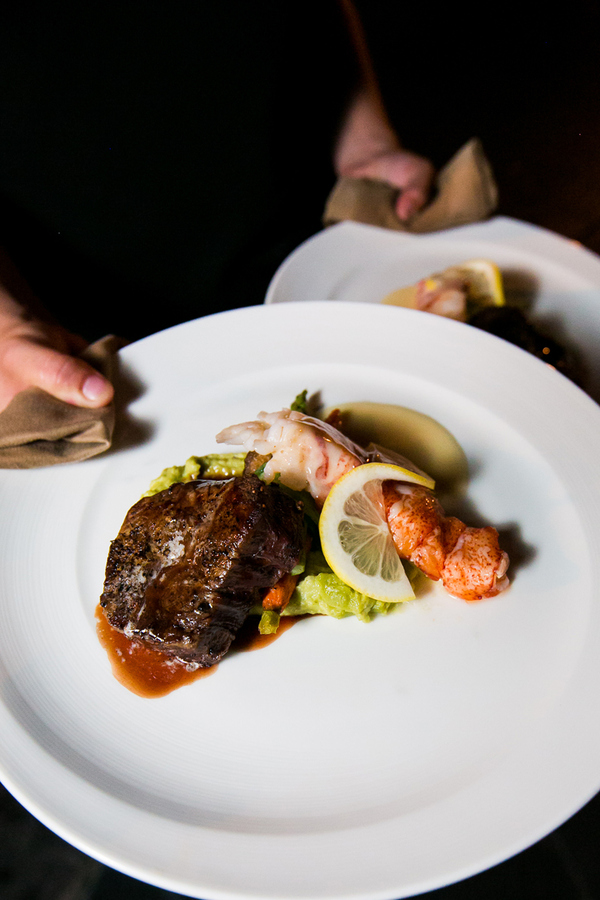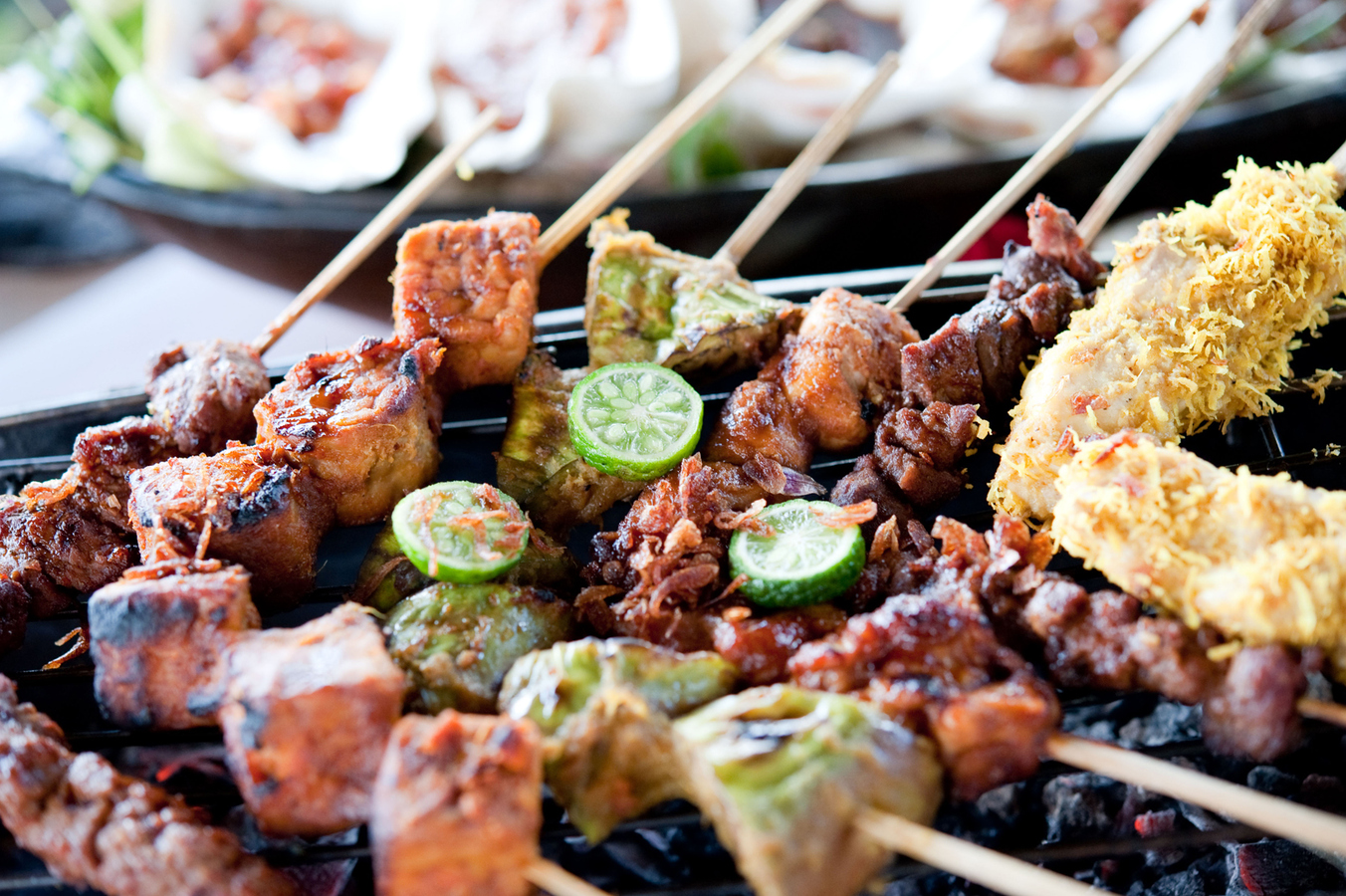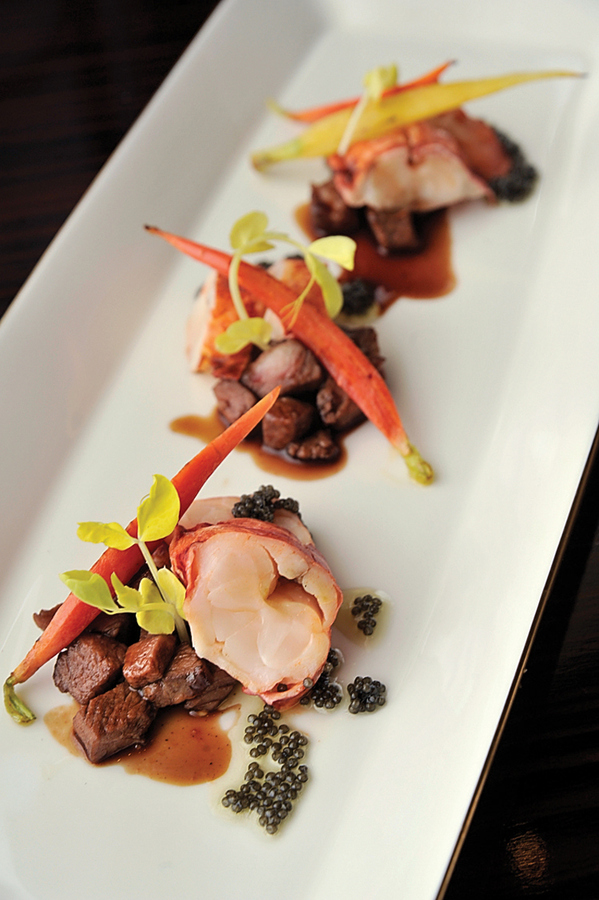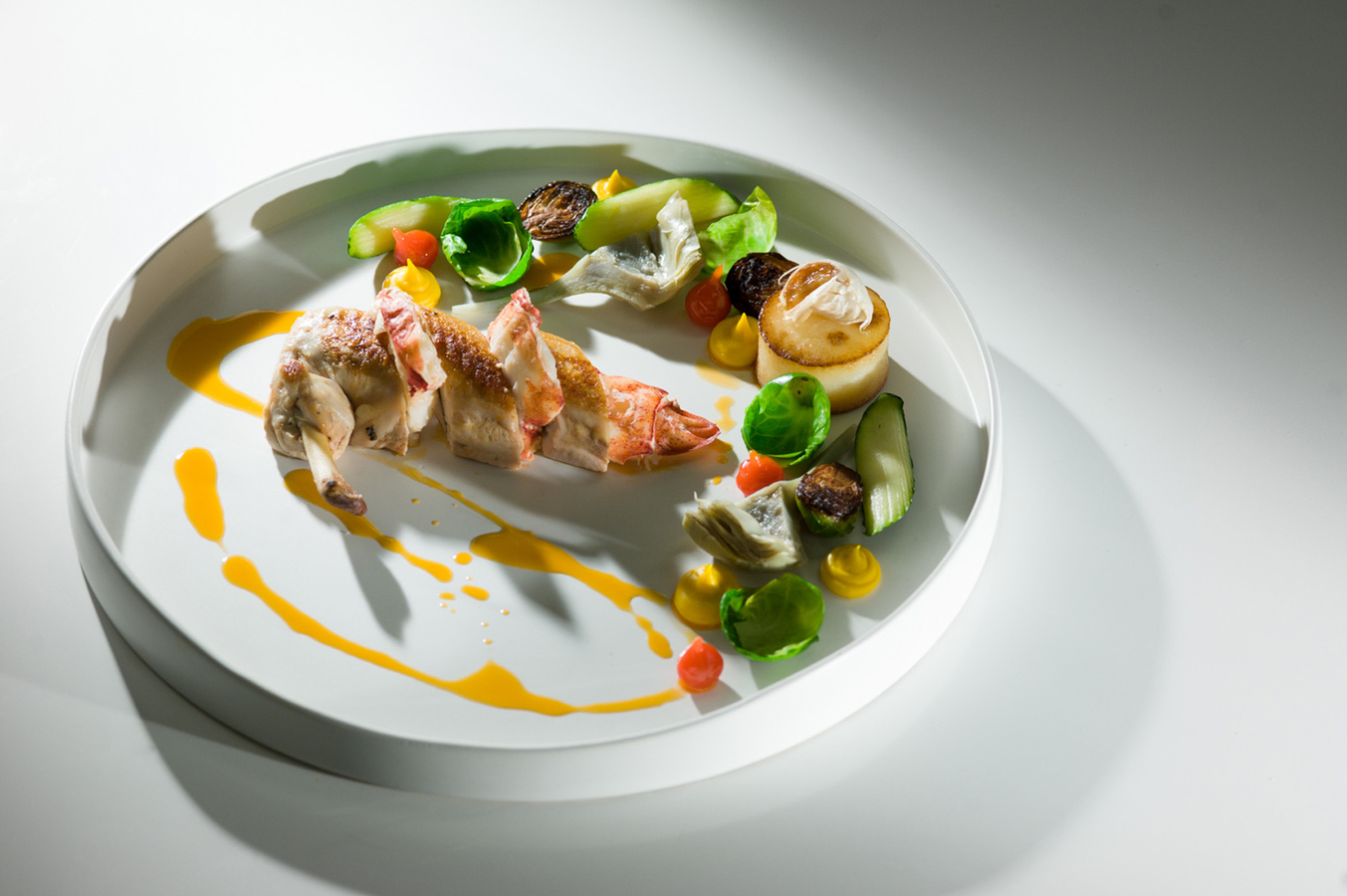
Catering: Thierry Isambert Culinary & Event Design, Miami, Florida
For decades, the “surf and turf” has been a classic favorite for wedding menus worldwide. As the ultimate combination of meat and seafood, the original surf and turf concept rose to popularity during the 1960s and 1970s, becoming the ultimate symbol of middle-class continental dining – a far cry from the gourmet approach we see in more modern versions.
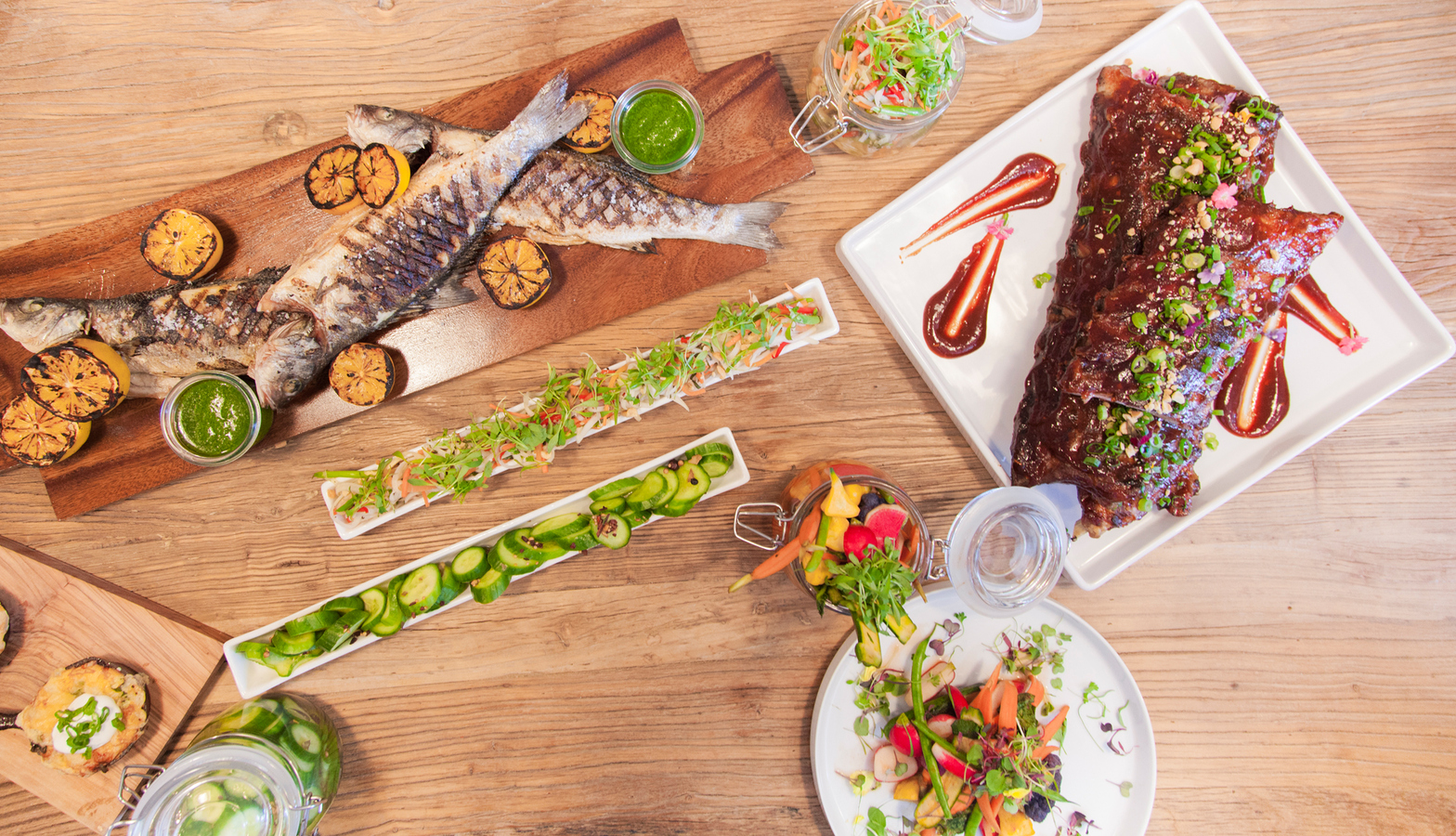
Catering: 24 Carrots Catering and Events, Los Angeles, California
Traditionally, the classic surf and turf consists of lobster and red meat (or steak). During the 1930s, the lobster component was a frozen lobster tail from South Africa, which was regularly found on menus across the United States.
With lobster tails costing substantially less than they do today, the combination of steak and seafood started to appeal more to diners, as it was more affordable than a regular steak dinner. As the surf and turf became more of a staple in American dining, however, restaurants and chefs began experimenting with the dish and creating incredible interpretations of the meal with a more refined approach.
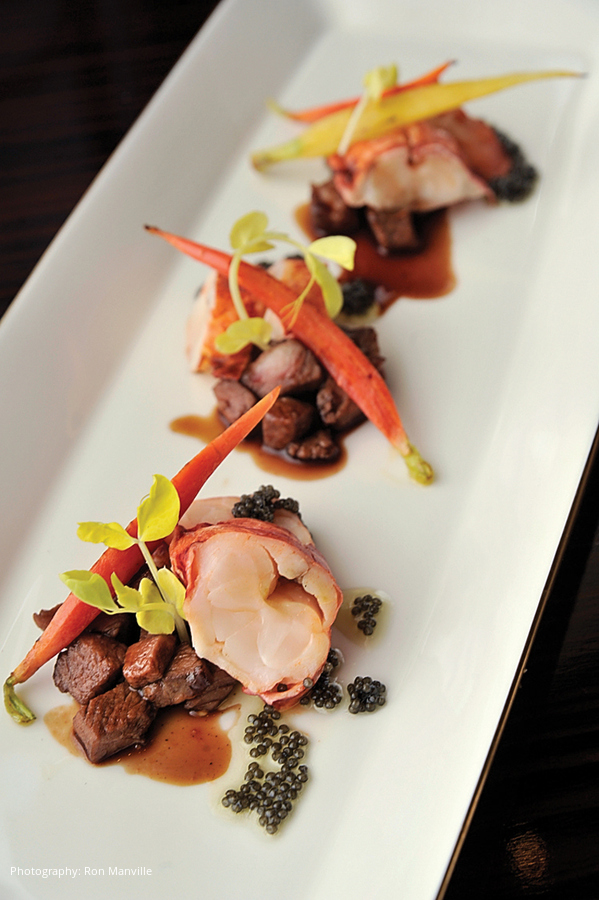
Executive Chef: Jason Weaver, Mandarin Oriental, Las Vegas, NV; Photography: Ron Manville
Today, the options are limitless when making the classic surf and turf part of your wedding dinner. You can never go wrong with a duo of lobster tail and filet mignon, although some prefer to swap out the lobster for another “surf” element like shrimp or crab legs. Although the “turf” usually refers to red meat, combining seafood with chicken or any other poultry is a great alternative.
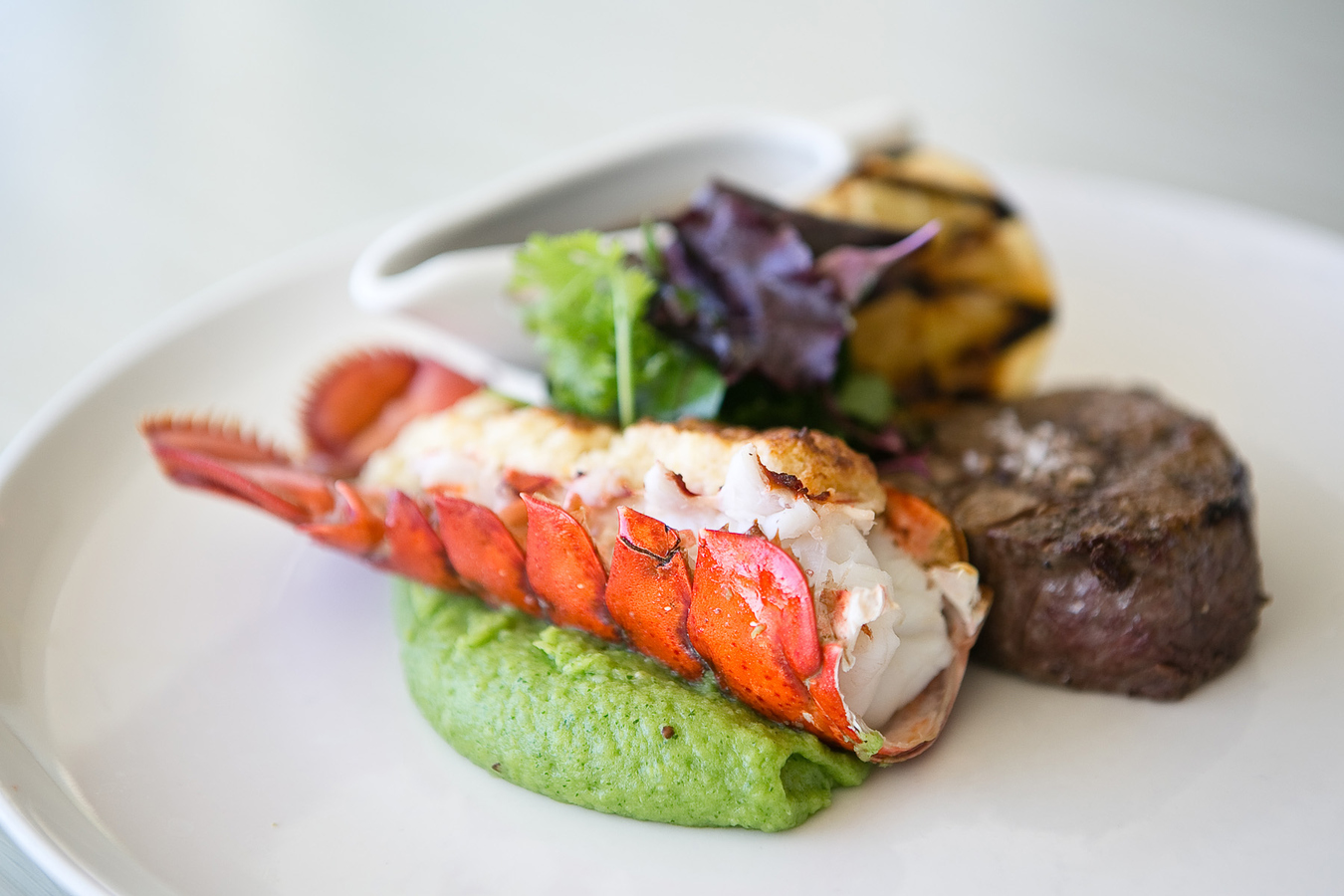
Catering: Waldorf Astoria Monarch Beach Resort, Dana Point, California
For a less formal approach, try creating an impressive family-style dining experience with oversized boards and trays of whole grilled fish, spareribs, and dishes of fresh vegetables. This type of “deconstructed surf and turf” is perfect for an elegant rustic wedding in Tuscany, or perhaps a vineyard wedding in California.
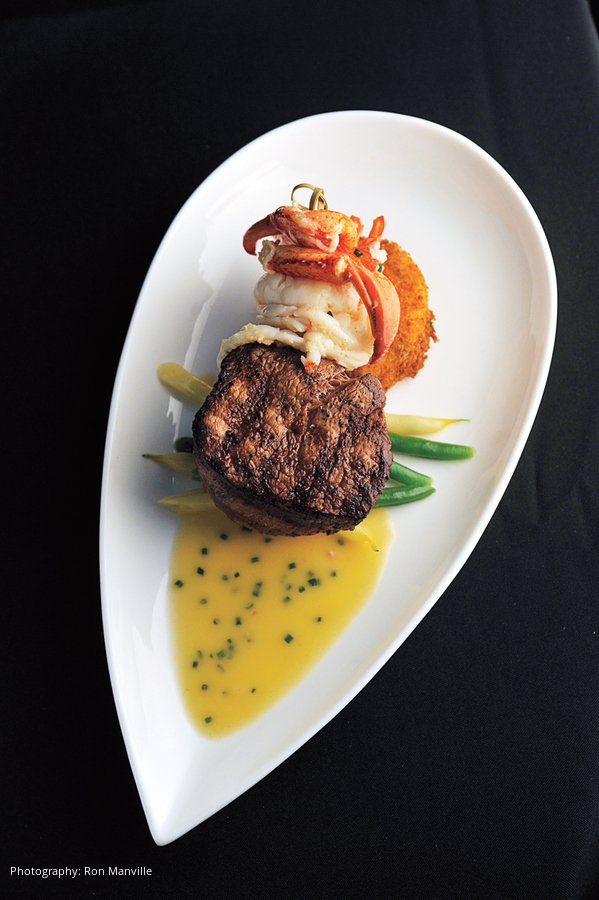
Catering: Russell Morin Fine Catering, Newport, Rhode Island; Photography: Ron Manville
The surf and turf concept also makes an ideal menu item for cocktail hours, providing the perfect bite to pair with cocktails and champagne. Offer guests more options with individual skewers of chicken, beef, scallops, and shrimp tempura, allowing them to mix and match their favorite surf and turf combinations.

